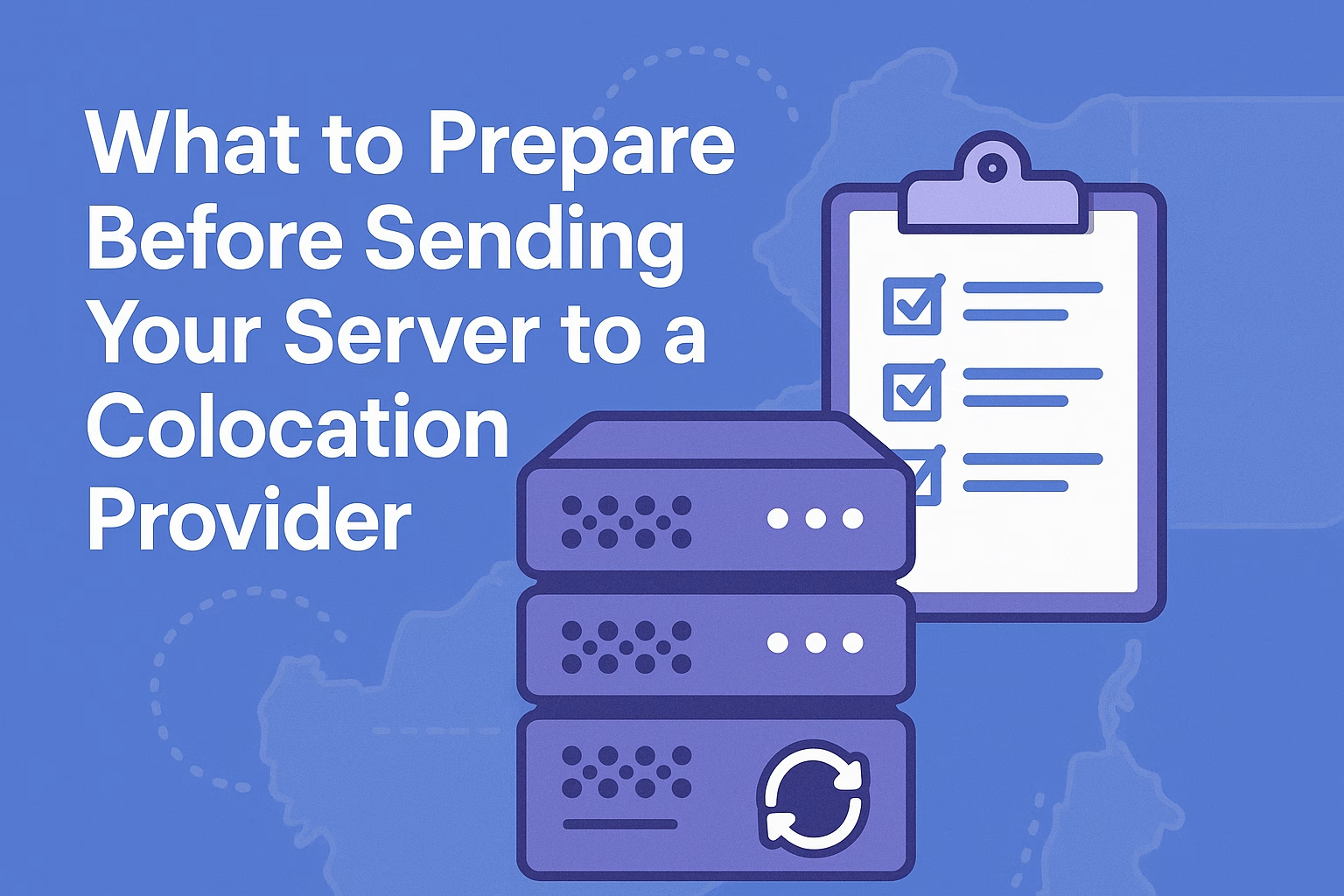So, you’ve decided to colocate your server — great choice.
Colocation gives you full control over your hardware while benefiting from enterprise-grade uptime, bandwidth, and security.
But before your server arrives at PLiKhost’s data center, there are a few important things to prepare to ensure a smooth setup and operation.
Here’s a complete checklist of what to do before shipping your server.
✅ 1. Choose the Right Hardware
Your server must physically fit into the rack space provided.
-
🔹 Standard size: 1U, 2U, or 4U rackmount server (tower servers may not be accepted)
-
🔹 Use rack rails or mounting kits (optional but helpful)
-
🔹 Confirm power compatibility (typically 220V, C13 or C19 power plugs)
Also, make sure:
-
All components are tested and working
-
Fans and cooling systems are clean and functional
-
Disk drives are securely mounted
💡 Avoid last-minute surprises — test everything before shipping.
🔌 2. Label and Document Your Equipment
To help technicians identify your hardware and cables during setup or troubleshooting, label clearly:
-
Server hostname or customer name
-
Cable labels (e.g. power, network)
-
Any add-on components like storage units or PDU
Also, prepare a simple document or PDF with:
-
Server specs (CPU, RAM, disks)
-
Internal IP addresses or network plans
-
Login credentials (admin/SSH), if temporary access is needed by the provider
💻 3. Configure the Server for Remote Access
Once colocated, you likely won’t have physical access. So make sure remote access is ready:
-
Enable SSH and allow specific IPs
-
Set up out-of-band management if available (iDRAC, IPMI, iLO, etc.)
-
Consider installing a VPN server or remote desktop tools (RDP, VNC) if needed
-
Configure a firewall to block unauthorized access
🔐 Security first — don’t leave default credentials active.
🌐 4. Prepare the Network Settings
PLiKhost will assign you:
-
One or more public IP addresses
-
Gateway and DNS settings
Before shipping:
-
Assign a static IP on your server (you can reconfigure later if needed)
-
Disable DHCP on production interfaces
-
Make sure your system boots without GUI or local intervention
Bonus: install tools like
nload,htop, ornetstatto monitor performance remotely.
☁️ 5. Back Up Your Data
Before shipping:
-
Back up your entire system or critical files
-
Use external drives or cloud storage
-
Ensure that the server can recover if damaged or delayed
📦 Accidents can happen — always ship with a backup strategy in place.
🔋 6. Include Only the Essentials
Only send what’s necessary:
-
Main server unit
-
Rails or brackets (if requested)
-
Power and network cables (optional — PLiKhost usually provides them)
Leave out:
-
Monitors, keyboards, unnecessary peripherals
-
External storage not meant for rackmount
🎯 The goal is a clean, rack-ready install.
📄 7. Inform PLiKhost Before Shipping
Let us know in advance:
-
What is arriving (server model, size, number of units)
-
Expected delivery time
-
Rack and power requirements
-
Preferred setup instructions or remote access methods
Our team will make sure everything is ready when your gear arrives.
Final Thoughts
Colocation is all about control, performance, and reliability — and good preparation ensures you get all three from day one.
By preparing your server properly, you make the handoff to PLiKhost’s data center smooth, professional, and efficient.
🟢 Need Help Preparing for Colocation? Contact PLiKhost
We’re here to assist with shipping, setup, remote access, and more.






